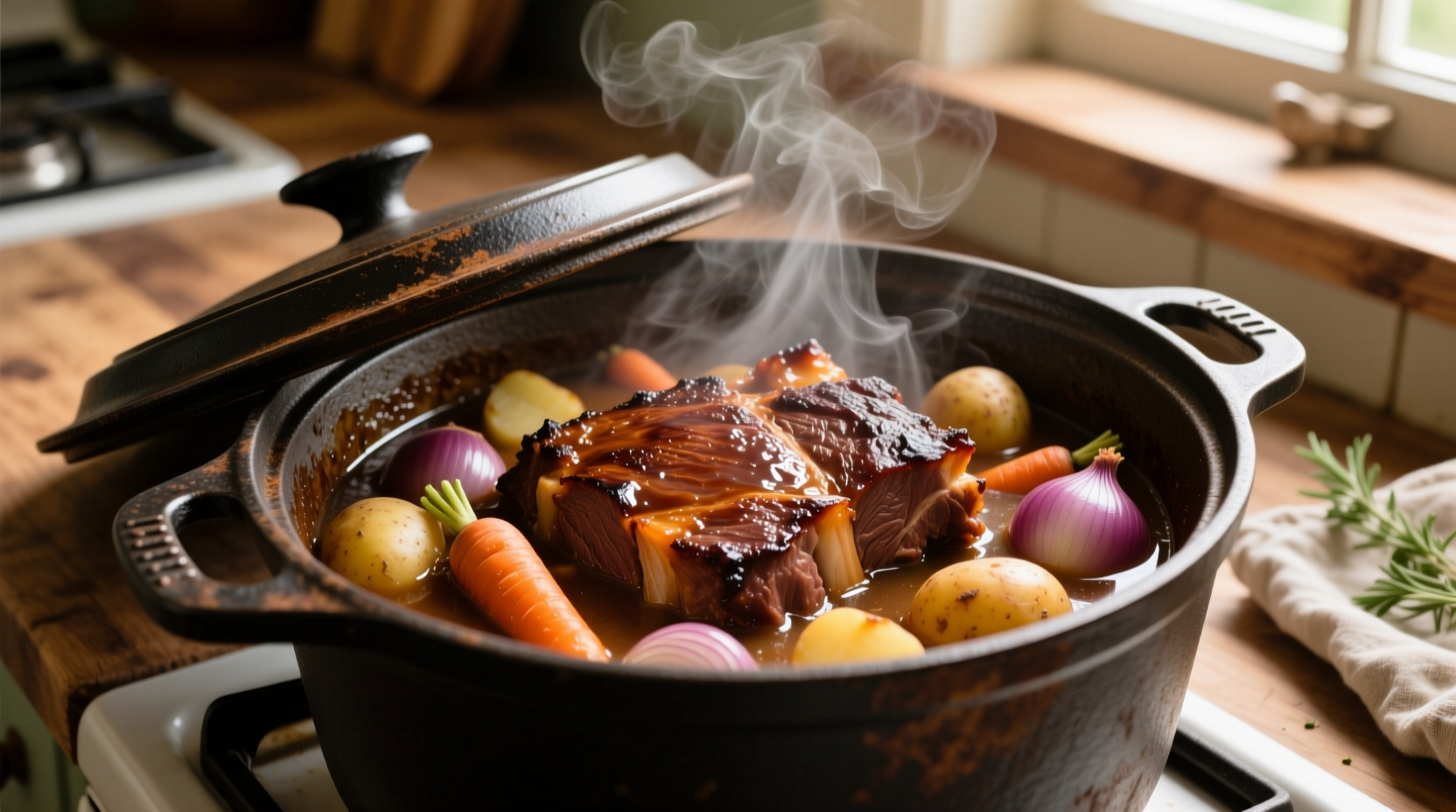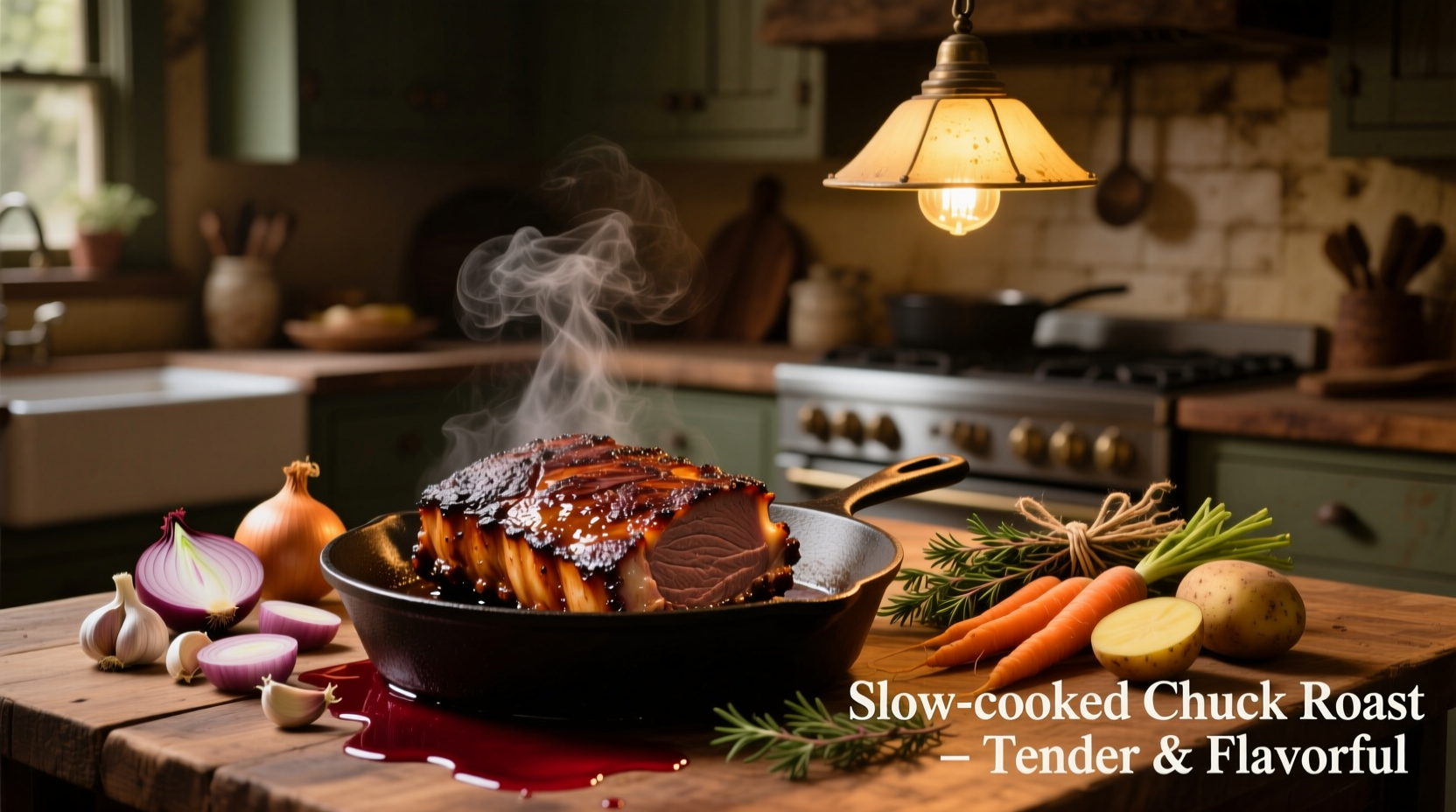The top 3 best uses for chuck roast are pot roast, beef stew, and shredded barbacoa tacos. This tough cut transforms into tender, flavorful dishes through slow cooking methods that break down its abundant collagen and marbling, making it perfect for braising, slow cooking, and pressure cooking applications.
Chuck roast, cut from the shoulder area of the cow, contains rich marbling and substantial connective tissue that makes it ideal for slow-cooking methods. Unlike tender cuts like filet mignon that shine with quick searing, chuck roast requires patience—typically 2.5-4 hours of moist heat—to transform its tough collagen into gelatin, yielding fork-tender results with deep beefy flavor.
Why Chuck Roast Needs Special Cooking Methods
Understanding the science behind chuck roast explains why certain cooking methods work best. According to food science expert Harold McGee in On Food and Cooking, the shoulder area contains approximately 30% more collagen than tenderloin cuts. This collagen begins converting to gelatin at 160°F (71°C), but the process accelerates significantly between 180-205°F (82-96°C)—temperatures safely above the USDA's minimum safe cooking temperature of 145°F (63°C) for beef.
| Cooking Method | Temperature Range | Time Required | Best For |
|---|---|---|---|
| Slow Braising | 275-325°F (135-163°C) | 3-4 hours | Classic pot roast, beef stew |
| Pressure Cooking | 240°F (116°C) | 60-90 minutes | Weeknight meals, shredded beef |
| Oven Roasting | 300-325°F (149-163°C) | 2.5-3.5 hours | Dry-heat applications with proper searing |
Top Chuck Roast Recipe Categories
Classic Comfort Food Staples
No kitchen should be without these foundational chuck roast preparations. For perfect pot roast, sear 3-4 pound chuck roast at 400°F (204°C) for 3-4 minutes per side, then braise with 1 cup beef broth, 2 cups vegetables, and herbs at 300°F (149°C) for 3 hours. The USDA Food Safety and Inspection Service recommends cooking until internal temperature reaches 190-205°F (88-96°C) for optimal tenderness in tough cuts.
Global Flavor Transformations
Chuck roast shines across international cuisines when matched with appropriate flavor profiles. Korean galbi-jjim transforms chuck roast with soy sauce, ginger, and Asian pear for natural tenderizing. Mexican barbacoa benefits from the traditional adobo sauce with chipotle peppers and cumin. For French boeuf bourguignon, the alcohol in red wine helps extract fat-soluble flavor compounds while the slow cooking tenderizes the meat.

Weeknight-Friendly Adaptations
Modern kitchen appliances make chuck roast accessible for busy schedules. In a pressure cooker, season chuck roast with salt and pepper, sear, then cook with 1 cup liquid for 65-75 minutes at high pressure. The Natural Pressure Release method (allowing 15-20 minutes after cooking) prevents the meat from becoming stringy. This technique cuts traditional cooking time by 60% while maintaining tenderness—perfect for shredded beef tacos or sandwiches.
Pro Techniques for Perfect Results Every Time
Professional chefs employ specific techniques that home cooks can easily adopt. Always pat chuck roast dry before searing to achieve proper Maillard reaction—this develops complex flavor compounds. Use the 1:2 meat-to-liquid ratio for braising (1 part meat to 2 parts liquid by volume) to prevent boiling, which makes meat tough. When cooking for meal prep, shred chuck roast while warm (not hot) for optimal texture retention.
Understanding the collagen breakdown timeline is crucial: 1-2 hours sees minimal change, 2-3 hours shows significant tenderization, and 3-4 hours yields fork-tender results. Cooking beyond 4 hours risks the meat becoming dry as muscle fibers contract too much. This knowledge helps you time your meals perfectly—start your chuck roast when you begin preparing side dishes.
Troubleshooting Common Issues
If your chuck roast turns out tough, it likely didn't reach sufficient temperature or cook long enough for collagen conversion. Return to low heat with additional liquid and continue cooking. For greasy results, chill cooked chuck roast overnight—solidified fat easily removes from the surface. When flavors seem flat, balance with acid: add 1-2 tablespoons vinegar or lemon juice to brighten rich braising liquids.
Storage and Reheating Best Practices
Proper storage maintains quality for future meals. Cool chuck roast completely before refrigerating in airtight containers for up to 4 days. For freezing, portion shredded beef with some cooking liquid in freezer bags (removing air) for up to 3 months. When reheating, always include cooking liquid to prevent drying—gently warm at 300°F (149°C) until internal temperature reaches 165°F (74°C), per USDA guidelines.











 浙公网安备
33010002000092号
浙公网安备
33010002000092号 浙B2-20120091-4
浙B2-20120091-4